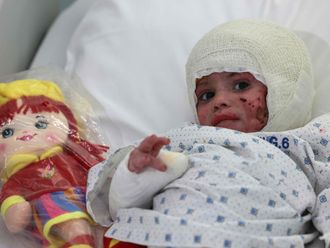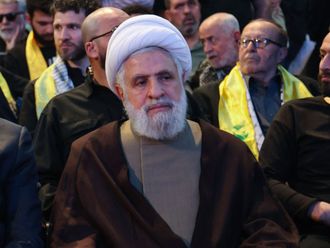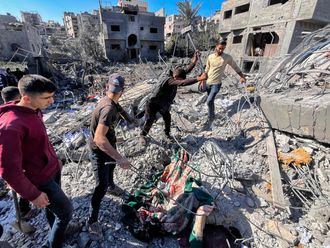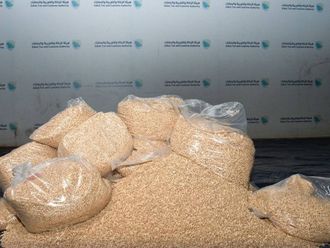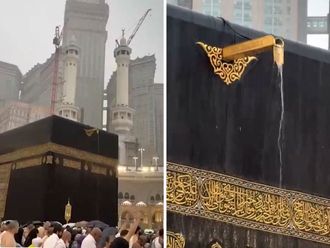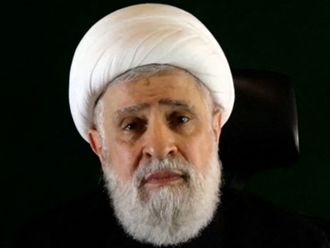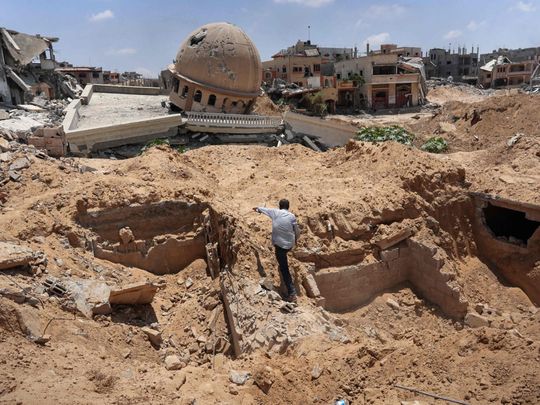
PARIS: After members of the Palestinian militant group Hamas carried out the worst attack in Israeli history, on October 7, 2023, Israel responded with a devastating military campaign in the Gaza Strip.
The air and ground operation has killed at least 39,480 people, according to the health ministry in the Hamas-ruled territory, which does not give details of civilian and militant deaths.
AFP looks back at key moments in the war.
Hamas attacks
At dawn on October 7, hundreds of Hamas fighters infiltrate Israel.
They kill civilians in the streets, in their homes and at a desert music festival, and attack troops in army bases.
They seize 251 hostages and take them back to Gaza, with 111 still detained including 39 the military says are dead.
Israeli Prime Minister Benjamin Netanyahu vows to destroy Hamas, which is considered a terrorist organisation by the United States, European Union and Israel.
North Gaza exodus
Israel begins bombing and besieging Gaza. On October 13, it calls on civilians in northern Gaza to move south ahead of an expected ground offensive.
By the end of July only 14 percent of areas in Gaza were not covered by evacuation orders, the head of the UN’s agency for Palestinian refugees says, and the UN reports around 90 percent of Gazans are displaced.
Ground invasion
On October 27, Israel launches a ground offensive.
On November 15, Israeli troops raid Al-Shifa hospital, Gaza’s biggest medical facility, where Israel claims Hamas has a command centre, something Hamas denies.
Truce and hostage swap
On November 24, a week-long truce between Israel and Hamas goes into effect.
Hamas releases 80 Israeli hostages in return for 240 Palestinians held in Israeli prisons. Twenty-five other hostages, mainly Thai farm workers, are also set free outside the deal.
Israel allows more aid into Gaza during the pause but the humanitarian situation in the besieged territory remains dire.
When the war resumes, Israel expands its actions into southern Gaza.
Call to prevent ‘genocide’
In an interim ruling on January 26 in a case brought by South Africa, the International Court of Justice orders Israel to do “everything” to prevent any acts of genocide.
Deadly food stampede
On February 29, Israeli forces open fire on residents of northern Gaza who rush towards a convoy of food aid trucks, saying they believed they “posed a threat”.
Gaza’s health ministry says 120 people were shot dead and hundreds wounded, calling it a “massacre”.
Israel’s military says most of the victims were trampled or run over by the trucks.
From early March several countries, including the United States, drop aid over Gaza which the United Nations says faces famine. A first aid ship from Cyprus arrives on March 15.
Aid workers killed
On April 1, seven aid workers from the US charity World Central Kitchen are killed in an Israeli strike, which the military claims was a “tragic mistake”.
Netanyahu repeatedly threatens to send ground troops to Rafah, Gaza’s southernmost city where a majority of the territory’s 2.4 million people have sought shelter.
Iran attacks Israel
Fears of a regional overspill are stoked on April 13 when Iran pounds Israel with drones and missiles in retaliation for a deadly April 1 strike on Iran’s Damascus consulate, blamed on Israel.
On April 19, strikes target central Iran, which plays down the incidents without blaming Israel. Israel does not claim responsibility.
Operations in the south
On May 7, Israel’s army launches its offensive on Rafah, where the United Nations says up to 1.4 million are sheltering, and takes control of the border crossing with Egypt effectively blocking a key entry point for aid.
A strike overnight May 26-27 is blamed for starting a fire in a tent camp, killing 45 people, Gaza authorities say. Israel says two senior Hamas militants were targeted.
During eight days in July, Israel’s army targets five schools sheltering displaced people, leaving dozens dead, Hamas and Gaza sources say.
On July 13, a strike near Khan Yunis kills 92, and 70 others perish on July 22, Hamas says.
Regional flare up feared
Yemen’s Iran-backed Al Houthi militants who have carried out 90 attacks on shipping in the Gulf since November in solidarity with Gaza claim on July 19 a rare drone attack on Tel Aviv that kills one.
The next day Israel bombards Yemen Huthi-controlled port of Hodeida, causing a huge fire at the strategic facility and killing six, the rebels say.
At the Israeli-Lebanon border, almost daily exchanges of gunfire since October between the Israeli army and the Lebanese Islamist group Hezbollah, intensify in July.
On July 27, a rocket strike kills 12 youths in the Druze Arab town of Majdal Shams in the Israeli-annexed Golan Heights.
Israel blames the strike on Hezbollah, which denies the claim.
Israel retaliates with several strikes, including one Tuesday on Beirut’s southern suburbs that kills Fuad Shukr, a top Hezbollah commander, the group says, and five civilians.
On July 31, Hamas political leader Ismail Haniyeh is killed in a strike in Iran. The operation is blamed on Israel, which declines comment.
On August 1, Israel confirms that Hamas military chief Mohammed Deif had been killed in a July strike on Gaza.


